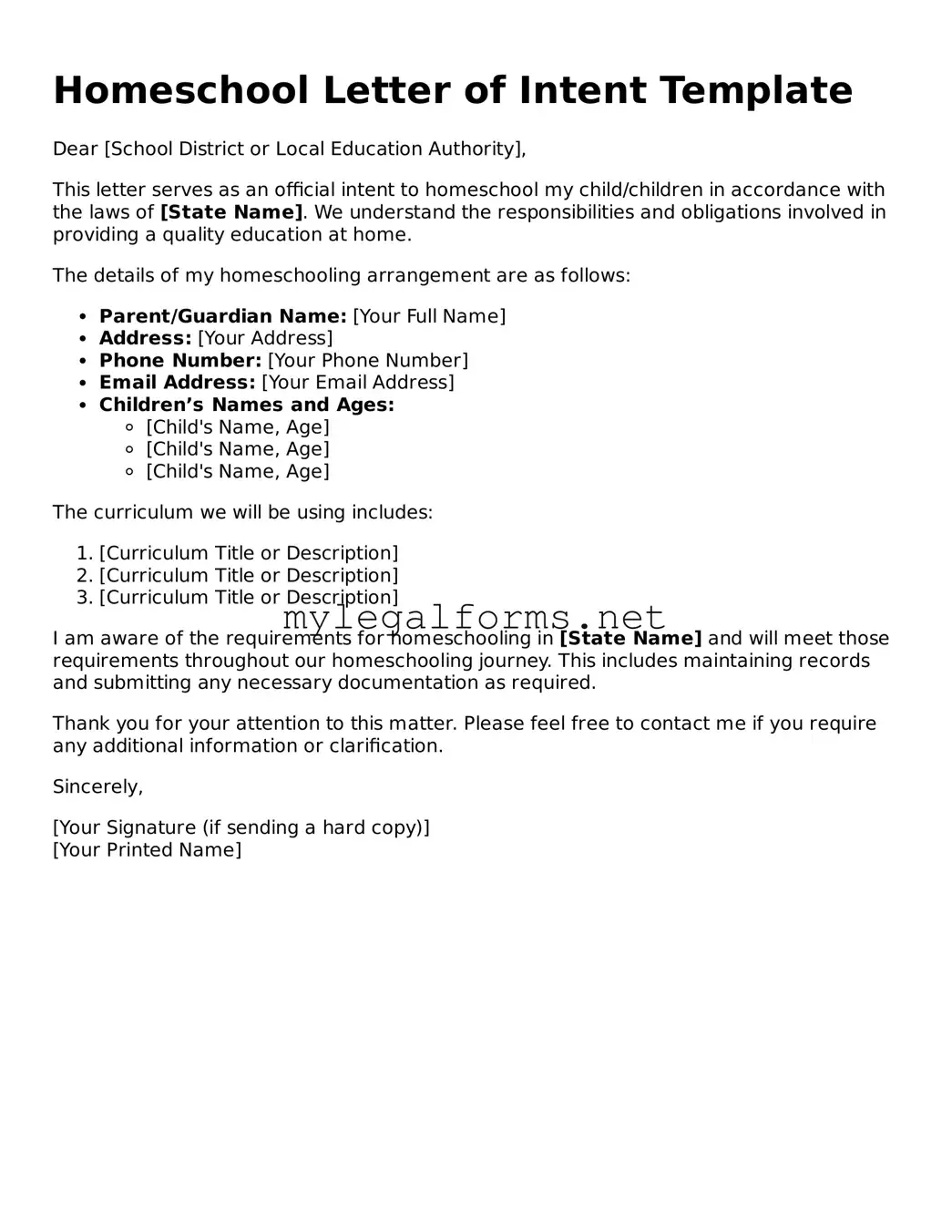Attorney-Approved Homeschool Letter of Intent Form
The Homeschool Letter of Intent is a formal document that parents submit to their local school district to notify officials of their decision to educate their children at home. This letter serves as an essential first step in the homeschooling process, outlining the family's intent to provide a structured educational environment outside of traditional schools. Understanding the requirements and implications of this form is crucial for any parent considering homeschooling.
Launch Homeschool Letter of Intent Editor
